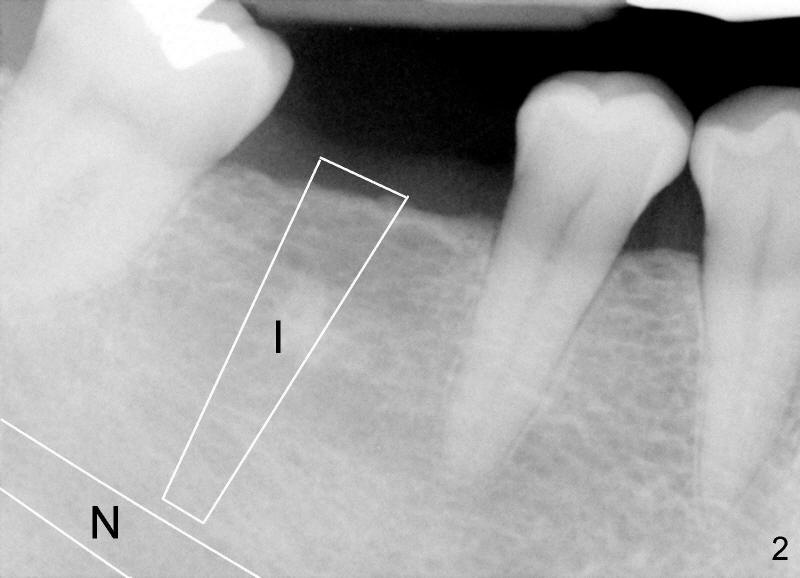
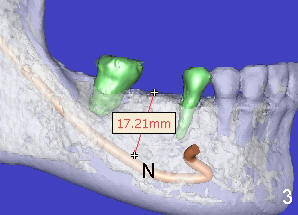
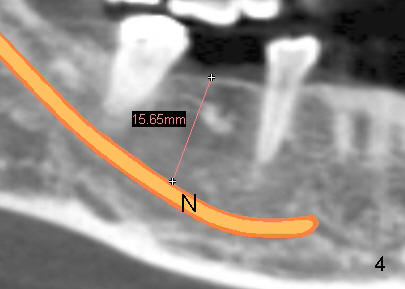
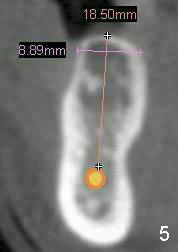
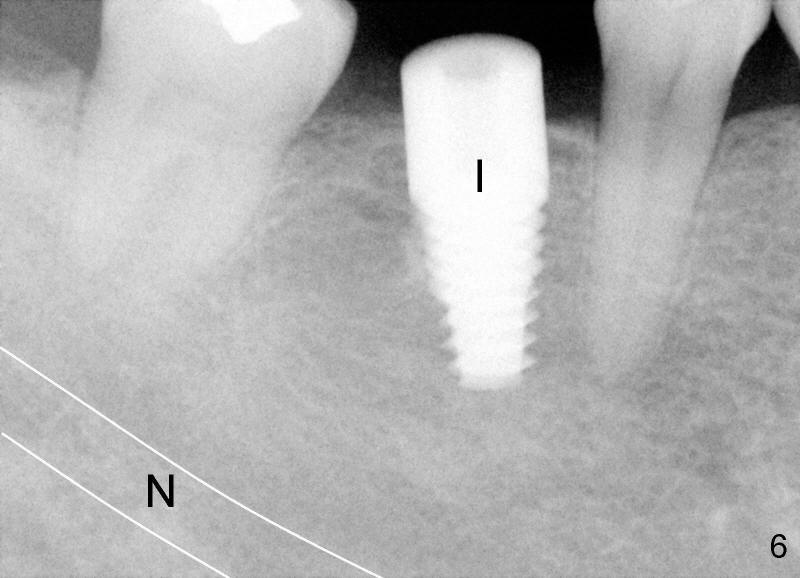
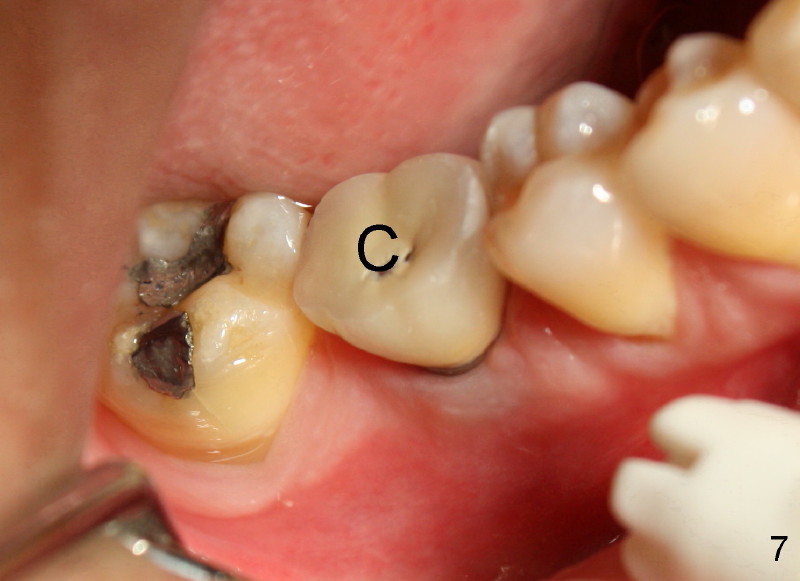
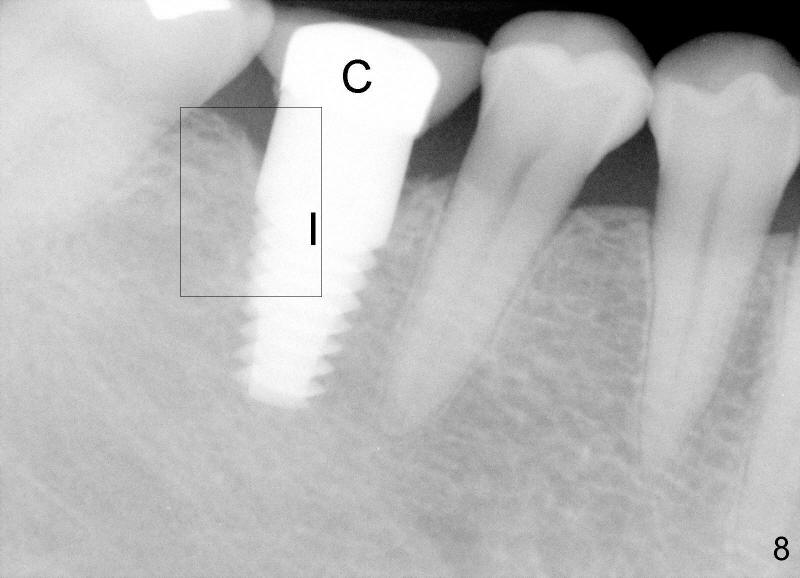
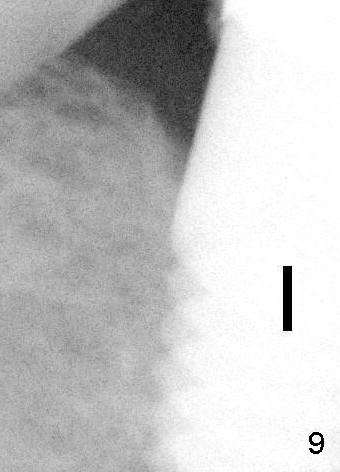
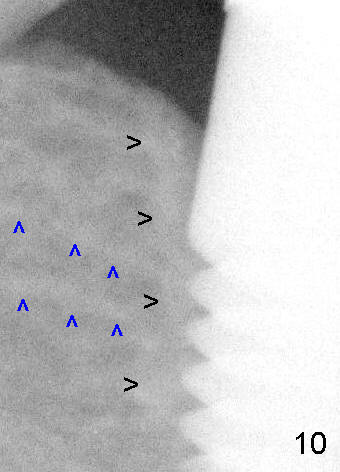
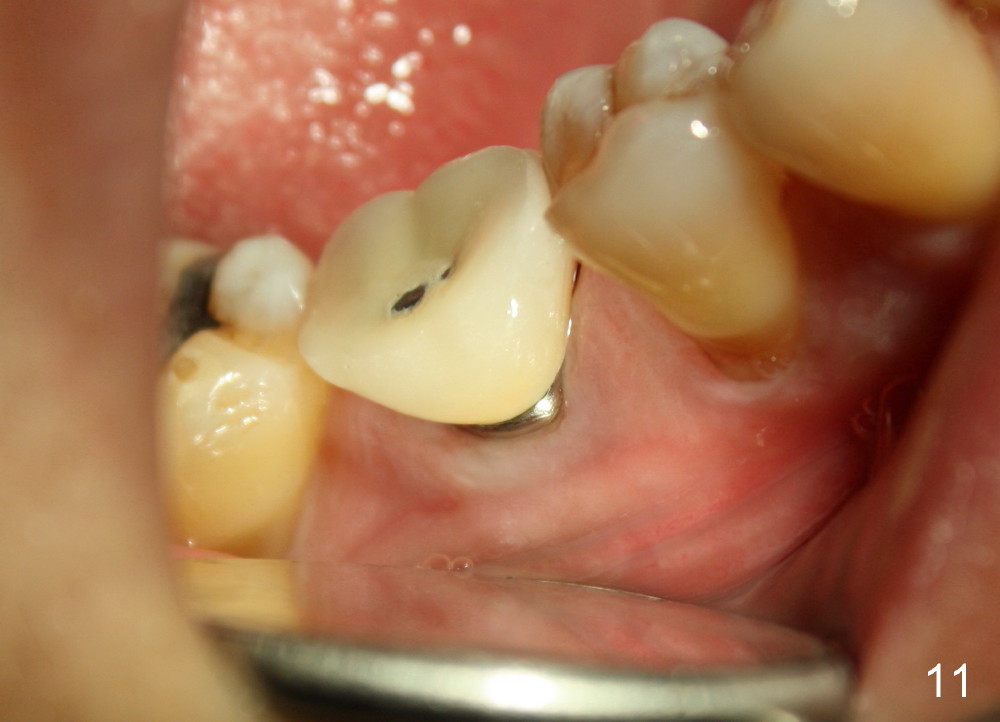
|
|
 |
 |
|
 |
 |
 |
|
 |
 |
 |
 |
 |
|||
Implant Design and Healing
Ms. Ou is afraid of dentistry. One of her molars has lost for several years (Fig.1*). Finally she decides to have it back and agrees to have an implant (Fig.2: I (design)). There is a large nerve below the implant (N). In order to place as large and as long implant as possible without injuring the nerve, CT is taken (Fig.3-5). Fig.3 is a 3-dimensional image. It shows clearly the course of the nerve and bone height is measured precisely (17.21 mm). Fig.4 is a cross section of the area; bone height is slightly shorter (15.65 mm). Fig.5 is another cross section to show the thickness of the bone (8.89 mm), which helps to decide the diameter of the implant. With these pieces of information, an appropriate implant (6 mm in diameter, 14 mm in length) is placed safely with certain distance from the nerve (Fig.6).
Ms. Ou is surprised to find out that surgery is painless. Everything is going on smoothly. Five months later, a crown is cemented (Fig.7 C). She enjoys eating with this new tooth from that point of time on. Fig.8 X-ray is taken 6 months after crown placement. Fig.9 is magnification of Fig.8 (boxed area) to show the relationship of bone with the implant, whereas Fig.10 is taken one year and 3 months later. While Ms. Ou enjoys chewing with the implant tooth, the bone surrounding the implant is becoming stronger. With chewing stimulation, the bone immediately next to the implant is thicker and denser (Fig.10 black >, as compared to the same area in Fig.9). The rest of surrounding bone has formed more definitive patterns: like strings (blue >; medically called bony trabeculae) inserted into the thickened bone plate (black >) just mentioned. It looks like these strings trying to hold the implant in place, the same way of ropes to hold a suspension bed between tree trunks in summertime. There is no denial that Ms. Ou enjoys her implant all the time round.
Fig.11 is taken 3 years 10 months after delivery of the implant crown. Both the gums and the crown look normal.
Xin Wei, DDS, PhD, MS 1st edition 06/17/2012, last revision 07/27/2014